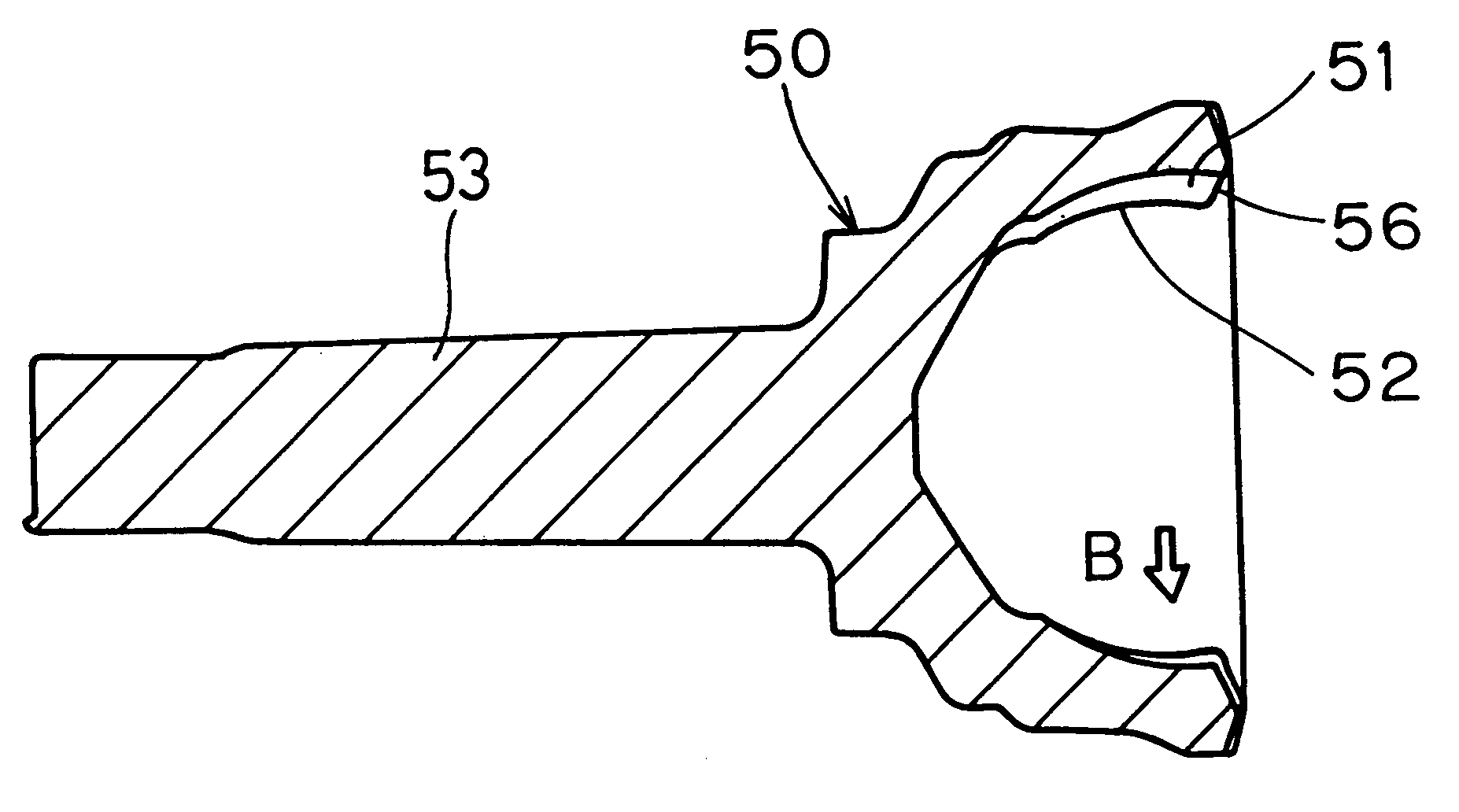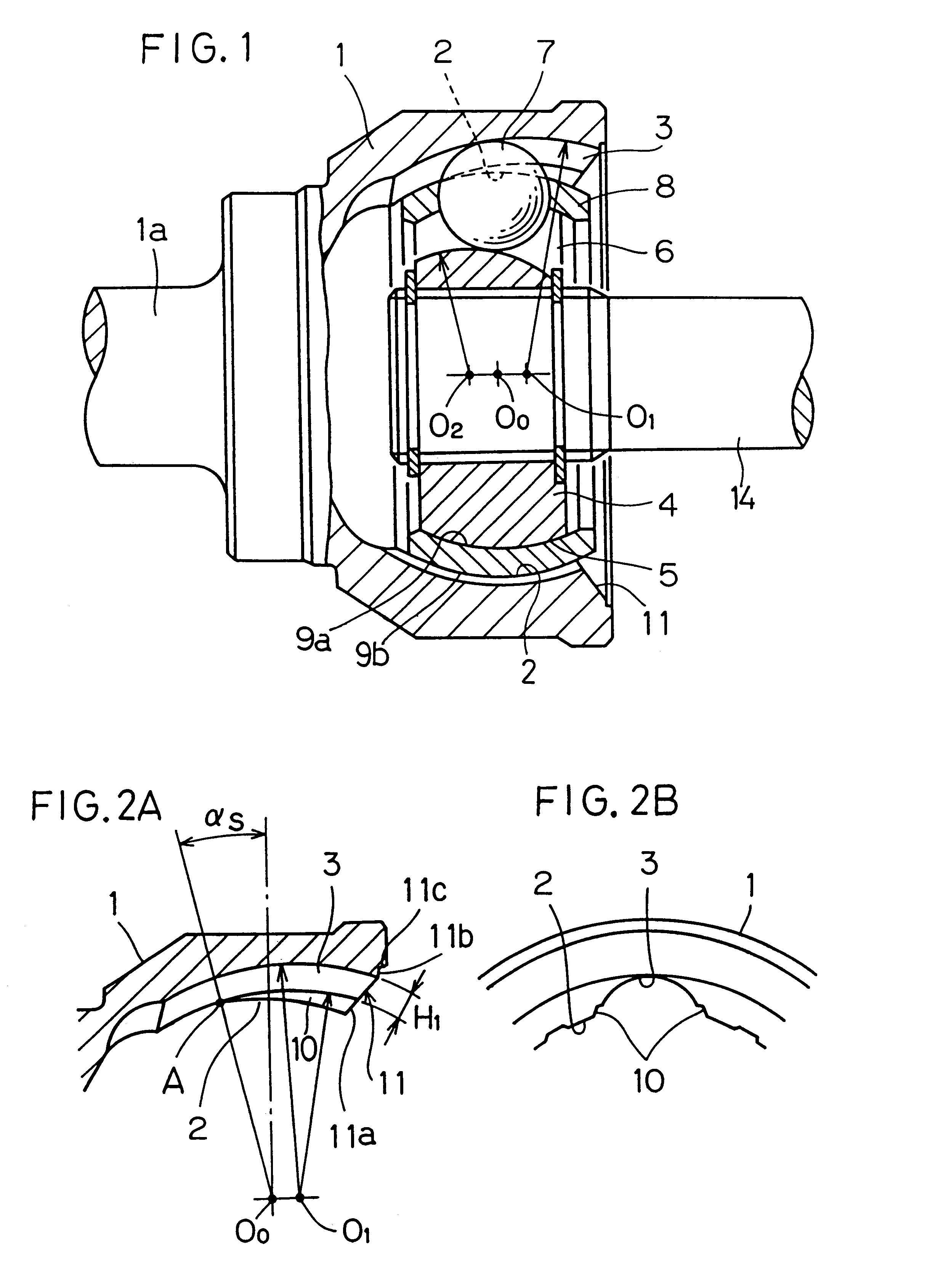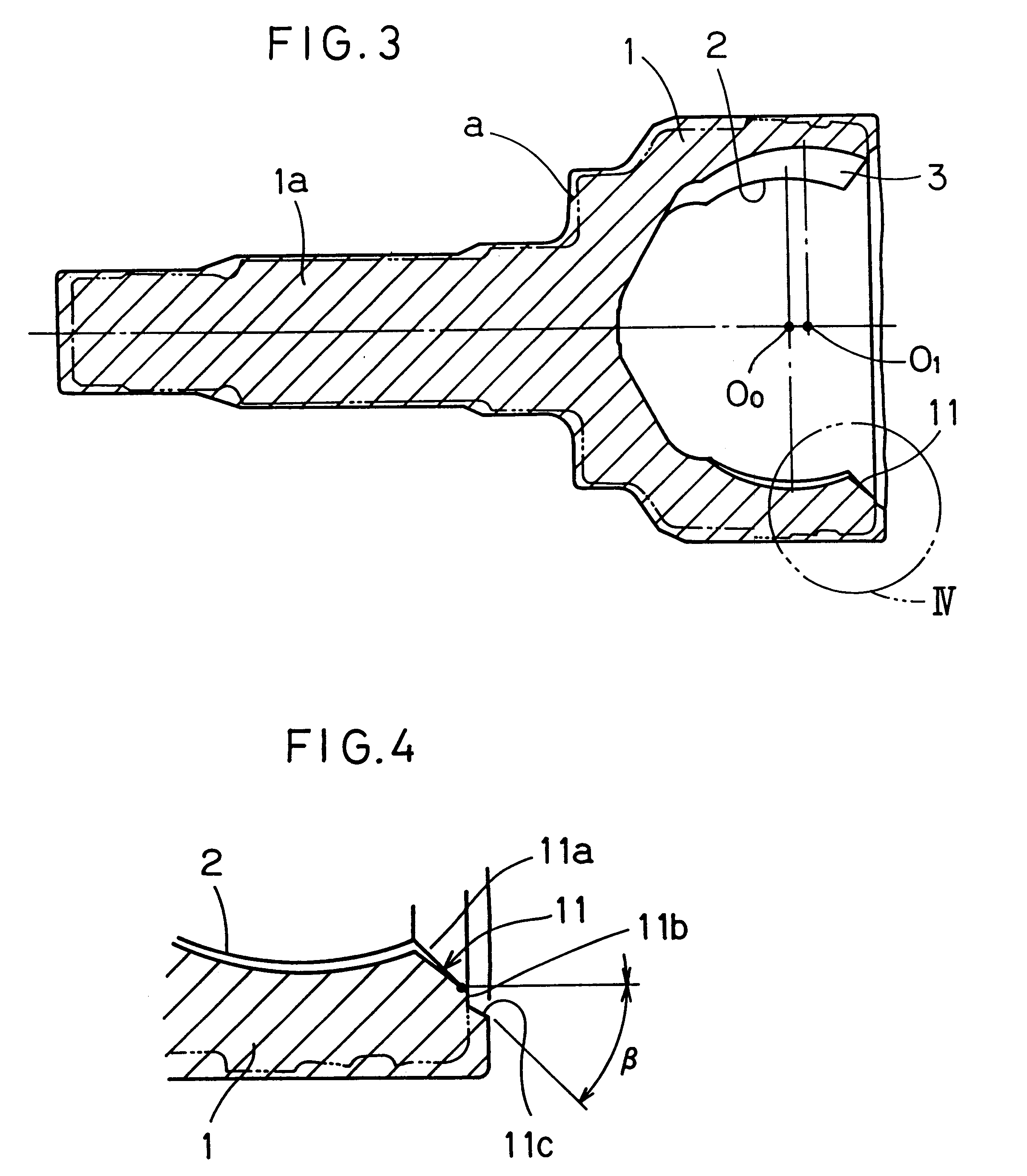Constant velocity joint and method of making an outer race therefor
a constant velocity joint and outer race technology, applied in the field of constant velocity joints, can solve the problems of reducing yield, difficult to achieve an increase in precision, and inability to easily increase the precision of track grooves
- Summary
- Abstract
- Description
- Claims
- Application Information
AI Technical Summary
Benefits of technology
Problems solved by technology
Method used
Image
Examples
Embodiment Construction
The preferred embodiment of the present invention will now be described with reference to FIGS. 1 to 17.
FIG. 1 illustrates a constant velocity joint. This constant velocity joint includes an outer race 1 having a spherical inner surface 2 formed with a plurality of track grooves 3 so as to extend in a direction parallel to an axial direction thereof, an inner race 4 having a spherical outer surface 5 formed with track grooves 6 equal in number to the number of the track grooves 3 in the outer race 1 and extending in an axial direction of the inner race 4; and torque transmitting balls 7 rollingly retained by a cage 8, that is positioned between the outer and inner races 1 and 4, and received in part within the associated track grooves 2 in the outer race 1 and in part within the associated track grooves 6 in the inner race 4. The cage 8 intervening between the outer and inner races 1 and 4 has spherical inner and outer surfaces 9a and 9b opposite to each other and is positioned with...
PUM
| Property | Measurement | Unit |
|---|---|---|
| Velocity | aaaaa | aaaaa |
| Torque | aaaaa | aaaaa |
Abstract
Description
Claims
Application Information
 Login to View More
Login to View More - R&D
- Intellectual Property
- Life Sciences
- Materials
- Tech Scout
- Unparalleled Data Quality
- Higher Quality Content
- 60% Fewer Hallucinations
Browse by: Latest US Patents, China's latest patents, Technical Efficacy Thesaurus, Application Domain, Technology Topic, Popular Technical Reports.
© 2025 PatSnap. All rights reserved.Legal|Privacy policy|Modern Slavery Act Transparency Statement|Sitemap|About US| Contact US: help@patsnap.com



